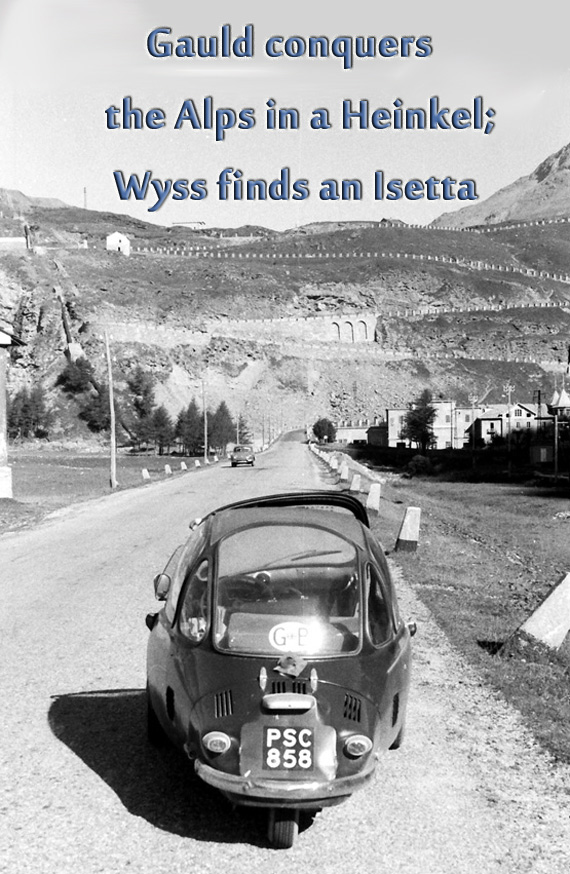 Gauld recalls his Heinkel days, Wyss finds a Isetta Convertible
Gauld recalls his Heinkel days, Wyss finds a Isetta Convertible
By Graham Gauld
I was recently reminded of a very special trip I made to Modena back in 1958. The reminder was the RM Auction held recently which featured the multitude of microcars that Bruce Weiner had collected and showed in his Microcar Museum in Madison, Georgia.
There have been many microcars built in the history of the automobile but in mid-1950s in Europe they became very popular during the Suez Canal Crisis in 1956.
Bruce Weiner obviously loved them and started to collect them. When RM put the lot up for sale the prices they reached were, to my mind, daft. Which brings me back to the trip to Italy.
People imagine motoring journalists today breezing about all over the world on new car launches and trips of all kinds lovingly paid for by manufacturers. Back in 1958 I was sports editor of a tiny weekly automobile magazine in Scotland. Despite the fact that the magazine, Motor World, was, at the time, the second oldest automobile magazine still in publication (we were founded in 1899 and Autocar in 1895), I didn’t even have a car; and certainly not one supplied by the company. However I wanted to go visit companies and in 1957 persuaded a pal with an MGA Coupe that we should drive to Modena and visit all the usual suspects, Ferrari, Maserati, Stanguellini etc. That was fine.
However, a year later I wanted to go back but was stuck. Eventually an RAF pilot friend had bought one of those Heinkel three-wheel “bubble cars” as they were called and as he was not using it he offered it to me. So I set off to drive from Edinburgh to Modena in a three-wheel car with a 125cc engine that with the Trade Winds in the right direction and going downhill might just hit 55 mph! It was memorable. For example my trip right over the top of the old St. Bernard Pass took four hours crawling up and round the hairpins at 10 mph. During the trip to and from Italy I wore out 9 plugs alone. It was an adventure and my schedule included a stop in Switzerland for the Ollon-Villars Hill Climb on the way to Italy and Reims for the Tour de France rally on the way back, plus of course, the Italian Grand Prix at Monza.
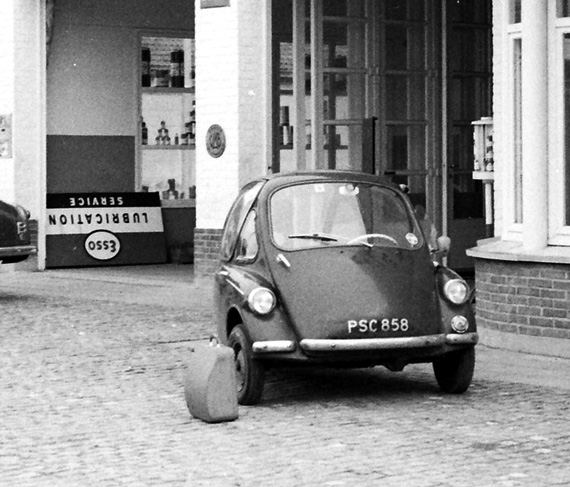
This shot was taken somewhere in Belgium on my dash to Ollon-Villars, I had just changed a plug on the car which is why the typewriter is standing outside as it was stowed with my bag above the engine and behind my seat.
OK, hands up. I was so fed up with the Heinkel that I dumped it at Modena railway station and took the train to Milan, a bus to Monza for the Grand Prix, and then went back the same way after the race.
Eventually I did get back to Edinburgh but I left Modena on a Saturday morning and did not get to Edinburgh until the following Wednesday afternoon. I cat-napped in the car and stopped for about six hours at Reims to meet up with the drivers on the Tour but it was some journey.
Now for perspectives. In 1958 that Heinkel was worth, second hand, about $200. Imagine my surprise, then, when at the RM Auction in February one of Bruce Weiner’s Heinkels, identical to the one I drove to Italy and back, sold for a tear-jerking $54,050: the world has gone bloody mad!
However I am now looking forward to an auction being held on March 17 in Paris by the major French auction house Osenat as they have another interesting three-wheeler coming up for sale. This is a 1925 Darmont Special. The Darmont company started just one year before and designed a three wheel car that was a pretty good copy of the legendary Morgan three-wheeler that was produced around 1911. The Darmont had two models, one air cooled and the other water cooled with the engine stuck out in front and a single rear wheel. However, they were keen to offer something quicker and so in 1925 developed the Darmont Speciale. The engine they used was again a French version of the 500c English Blackburne. But with the Speciale they added a supercharger so this flimsy looking bolide could hit 100 mph! The image of this reminded me of a remark Henry Manney III once said to me when we were looking at an early Lotus grand prix car: “Who’d send a kid up in a crate like that”?
I saw the Darmont at Retromobile on Osenat’s stand and it looked an impressive – if slightly frightening bit – of kit. It was used in competition and the black and white photo shows Marcel Dhome in action with the factory Darmont on the Gallion hill climb.
The car in the French auction is one of those Speciales, so if you want to impress your friends at the next traffic light grand prix, send Tom Bromehead (who is one of Osenat’s men in Paris)an email, and he will send you the catalogue: t_bromehead@yahoo.fr.
By Wallace Wyss
The Isetta’s origins were in Milan, Italy at the scooter and refrigerator company of Iso SpA, run by Renzo Rivolta. Called Isetta, or “little Iso”, the car was a startling, totally unconventional design that caused a furor at its introduction in Turin in November 1953. From this influential debut grew a number of licensed branches worldwide, the main one being BMW in Germany (another by V.E.L.A.M. in France). BMW, known more for motorcycles than cars at the time, was all for it, furnishing their two cylinder engine.
The first one was produced with a 236cc twin two stroke, a four speed gearbox and IFS. Only 7 ft. 4.5 inches long, it was the original “bubble car” which had the unique feature of a door in the front. When you opened the car, the steering wheel came with the door.
It was seen by BMW as filling a gap between their motorcycle range and the luxury 501 models. The car was redesigned to take the 250cc four stroke engine from the R-25 motorcycle, and the front suspension was changed. The finished car was announced in April 1955 and went into production shortly after. The quirky little Motocoupe as it was called by BMW, became the dream of the working man, and by November 1955, ten thousand had been built. In February 1956 came a 300cc motor. In September of that year, the redesigned “sliding-window” model made its debut, looking altogether more harmonious. 22,543 examples of the “egg” rolled off the line in this, its biggest year ever and just in time for the Suez Crisis of 1956 when Nasser suddenly made the price of gas in Europe very, very expensive.Which brings us around to the restoration of a 1957 BMW Isetta 300 by Jake Kouwe, who is part of the restoration team at Pete’s Custom Coachbuilding, PCC for short.
They particularly remember the Isetta because it is so off-the-wall, so un-Detroit. “The owner of the Isetta, Michael McCloskey, found the car when he was a teenager,” says Jake. “The car was in someone’s front yard being used as a decorative and eccentric planter for flowers. Mike saw potential in the car and convinced its caretakers to part with their garden piece.” Mike held onto the vehicle for years, someday hoping to restore it. The Isetta moved from garage to backyard, from house to house. Eventually, after hearing about PCC, the Isetta was brought in for restoration. As it turns out Mike found the ideal shop because Isettas were “old hat” at PCC. They had done several full restorations, assembly jobs, and reparations. “Our shop has even become somewhat of a supplier of various Isetta pieces. Pete mastered the fabrication procedure for Isetta door bottoms and we ship them out all over for others’ Isetta projects,” says Kouwe.
However, this Isetta was the first “convertible” Isetta, which meant they had to delve into the mystery of fabric tops. “Foremost was the top assembly itself,” said Kouwe. “Our interior/fabric specialist, Jean Coates, handmade the Isetta top using patterns, pictures, and pieces of the original top for reference. Our team at the shop had the job of attempting to figure out how to attach the top. Sure… there are many ways this could have been done… but which is the correct way? It seemed like every photo we found showed the top attached differently.” How was it attached? Brackets, cloth, screws? Many Isetta Convertible restorations have had their tops attached in modern ways and non-period. By studying factory photos and plans and talking to experts, PCC believes they have achieved perfection in the attachment of the top.
Therein lies the problem in restorations–if you go by other cars, how do you know if they did it right? But they persevered.
“The bottom portion of the Isetta was pretty far gone and a lot of it had to be fabricated from scratch,” said Kouwe. “The amount of body work we had to do was extensive before the vehicle was ready to paint.
“There really isn’t a lot to those cars. As a result, I am sure they weren’t overly expensive to build. It was a smart move for BMW. Not only did they move a lot of product since it was an efficient and somewhat affordable vehicle, but is so utterly different that it drew them a lot of recognition. There are still a lot of BMW dealerships today that keep an Isetta on the grounds as a display car and advertising tool. There’s really nothing else like it. BMW was already making those engines… and here was a car that they could run… not just a motorcycle. Though its engineering was superb and efficient (I am a BIG fan of German vehicles and engineering), the can be pretty scary to drive. I think it’d be fine for buzzing around town…. but you’d die from a heart attack if you took it on an interstate,” says Jake.
At Pete’s they now have a variety of cars including another Isetta, a Lotus, an Alfa Romeo, a GTO, and a Gurney Eagle. “The quirky Isetta is a good illustration of the work our shop does,” says Kouwe. The car is regularly shown and finished 2nd place in its class at the Glenmoor Gathering last year, a very prestigious concours.
Jake says the talent at the shop comes from various and diverse backgrounds–one was a pastry chef and Jean, the seamstress, lives on a horse farm and sells snakes on the Internet and Jake himself runs a polka band called “The Chardon Polka Band”.
“I personally love microcars because they were such an against-the-grain idea. All you ever see at local car shows is big hulking muscle cars that are loud and eat gas like it’s going out of style. There’s always been this mentality that bigger and badder is better. Microcars turn that thought upside down. We’ve taken a few to car shows and people don’t know what to make of them. There’s even a lot of people and shops out there that would not take the time to restore them. Our shop thrives on the obscure and quirky. We would much rather work on an Isetta or a Lambretta than a giant Chevy. There’s a lot of art to those little cars… especially the Isettas.”
Owner Mike McCloskey told us why he probably won’t sell, despite the prices today. “This was not only my first microcar, but it was my first car. I purchased the Isetta when I was 19 for $60. I just wanted my own car, and had no idea what it really was. I had started restoration on the car several times, but life happened and 30 years later I decided to have it professionally restored. The value of the microcars is starting to get a little crazy, but I have owned the car for so long I could not sell it now anyway. I don’t put many miles on the Isetta but the few I do put on are all smiles…lots lookers and tons of waves from everyone when you go by.”
See the restoration of this and an Alfa Giulietta Spider at PetesCustomCoachbuilding.
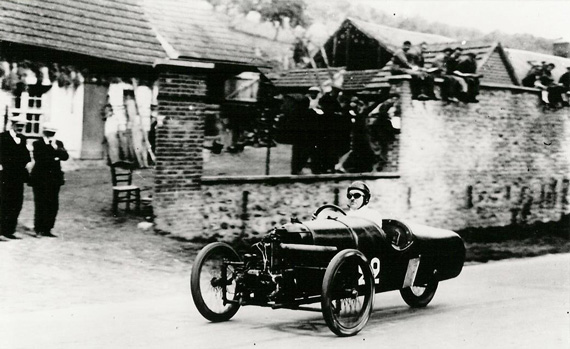
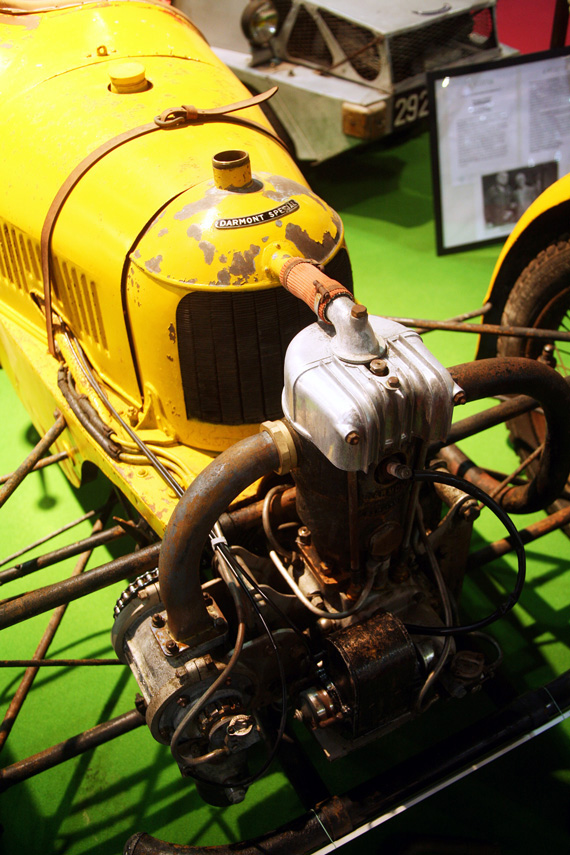


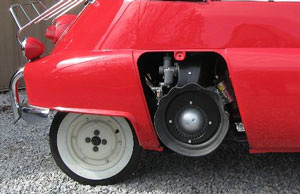
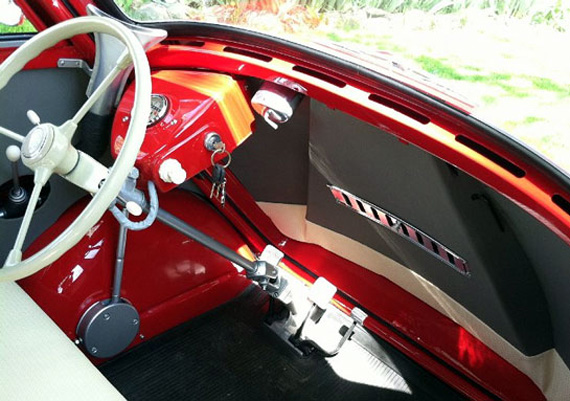
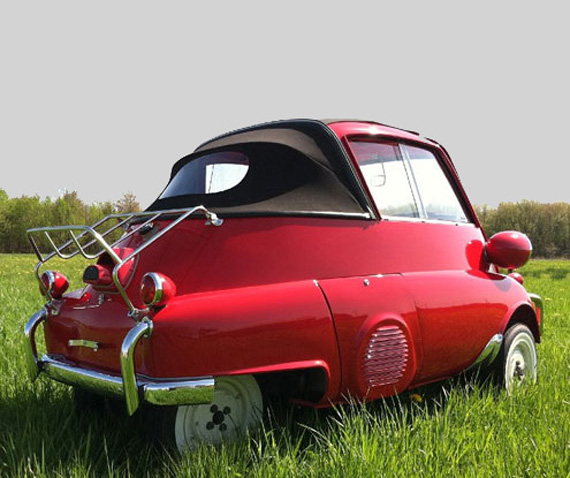
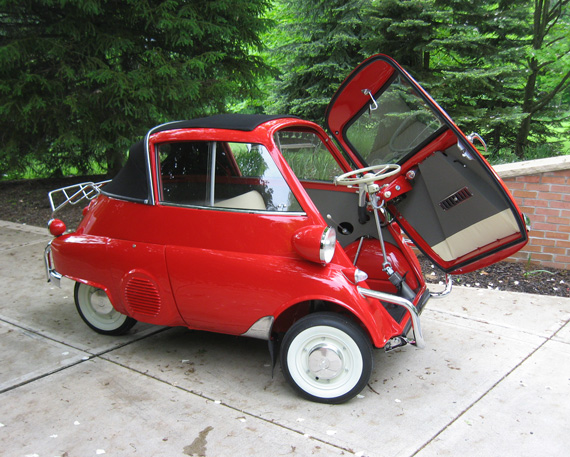
I do believe that the limits of 3 wheel car insanity was held by the Davis Car. This machine had two driven wheels in the rear and a single whee in front. Imagine trying to turn and brake simultaneously! I did see a 8mm home movie of just that in the early ’50s. The Davis did a very neat tuck and roll.
All other 3 wheelers had two wheels in front for sanity’s sake.
Jerry and others, if you haven’t seen the Top Gear episode where Jeremy drives the Reliant Robin, do yourself a favor and check it out on youtube. Search “Top Gear Jeremy Drives a Reliant Robin – full”
From Graham:
Jerry,
I agree with you entirely and sadly almost all the British three wheelerswent for one wheel at the front and two at the back. Having road tested most of them they could be frightening when trying to turn at speed with a great deal of yaw. At least with the two wheels at the front you could steer the thing properly and it didn.t really matter if the rear wheel slid out you could still control it with a bit of opposite lock. Also the majority of the British three wheelers were badly put together with relatively puny and unreliable engines. In my view only Berkeley produced some powerful microcars but these had four wheels.
GG
From Graham,
Steve
I rest my case
In the mid-’70s one of the major US car magazines had an article with a simple geometric analysis of three-wheelers; track vs. wheelbase, two wheels in front vs. rear; influence of cg location…seems like with two wheels in front and a reasonable wheelbase/track proportion, the car was only about 15% less stable in cornering than a similar fourwheeler with the same track/wheelbase.
Maybe you did not see them in the USA, but Berkeley’s best selling model was the T60 three-wheeler, with the wheels the correct 2 at the front, and front wheel drive. Mine drove very well, if underpowered, since it only had the 328cc Excelsior engine. Not as much fun as a Morgan though.
Graham’s European Drive brought back memories of an evening’s drive in Edinburgh to a party at a friend’s house with a good entrance drive.We were in a Heinkel which was driven sportily,we were going well but could’nt stop on the damp grass and ended up in the sunken rose garden.We were pulled out by the party goers who thought it was funny we were stuck with the door against the bank,fortuneately there was no damage.Motoring memories!!
the car has 4 wheels. Only the UK version, due to tax reasons, had 3 wheels.
This summer an Isetta went for over $40,000 on Barrett-Jacksons LasVegas Auction! It was neither a convertible or slider. My dad was an army officer stationed in Heidelberg. I specifically remember our little fiat we brought back from Italy.We also purshased an NSU Prinz to bring back to the States. But without a doubt my favorite was the Messershmidt! Our housekeeper had one. What a ride! This was back in the mid to late 50’s. The Messershmidt went for nearly $50,000 if I remember correctly at the same auction. This is a super story. I amthe proud owner of a Can-Am Spyder Phantom.2 wheels forward anf 1 rear.
Long a fan of Morgans’s 3 wheelers but wanting some thing more practical I built a DRK in the early 90’s. About 60 of these were produced by some lovely guys in Ellesmere Port, England using the simple expedient of bolting running gear from a Renault 4/5/6 onto a square tube steel ladder chassis and clothing it in a morganesque 2 seater wood and ally body. With a tuned 5 TS engine mine really flew and handled really well, being easy to drift around long corners of a number of racing ciruits. Being front wheel drive it was very stable as the moment you lifted a front wheel, of course you lost power and the wheel descended gently back to ground. There were a number of other 3 wheel replicas around at the time using motorcycle engines and rwd and I saw a few flip as when the front wheel lifted the whole thing became unstable; if you were unwise enough to touch the brakes in this mode the flip over was inevitable. There was one well publicised occasion at castle Combe when one carrying a passenger on a demo lap did just that and the local press carried photos of his helmet worn right through to the strapping as he careered down the straight at speed supporting the up-ended vehicle on his head. The result was a ban on 3 wheelers racing at that circuit, more’s the pity.